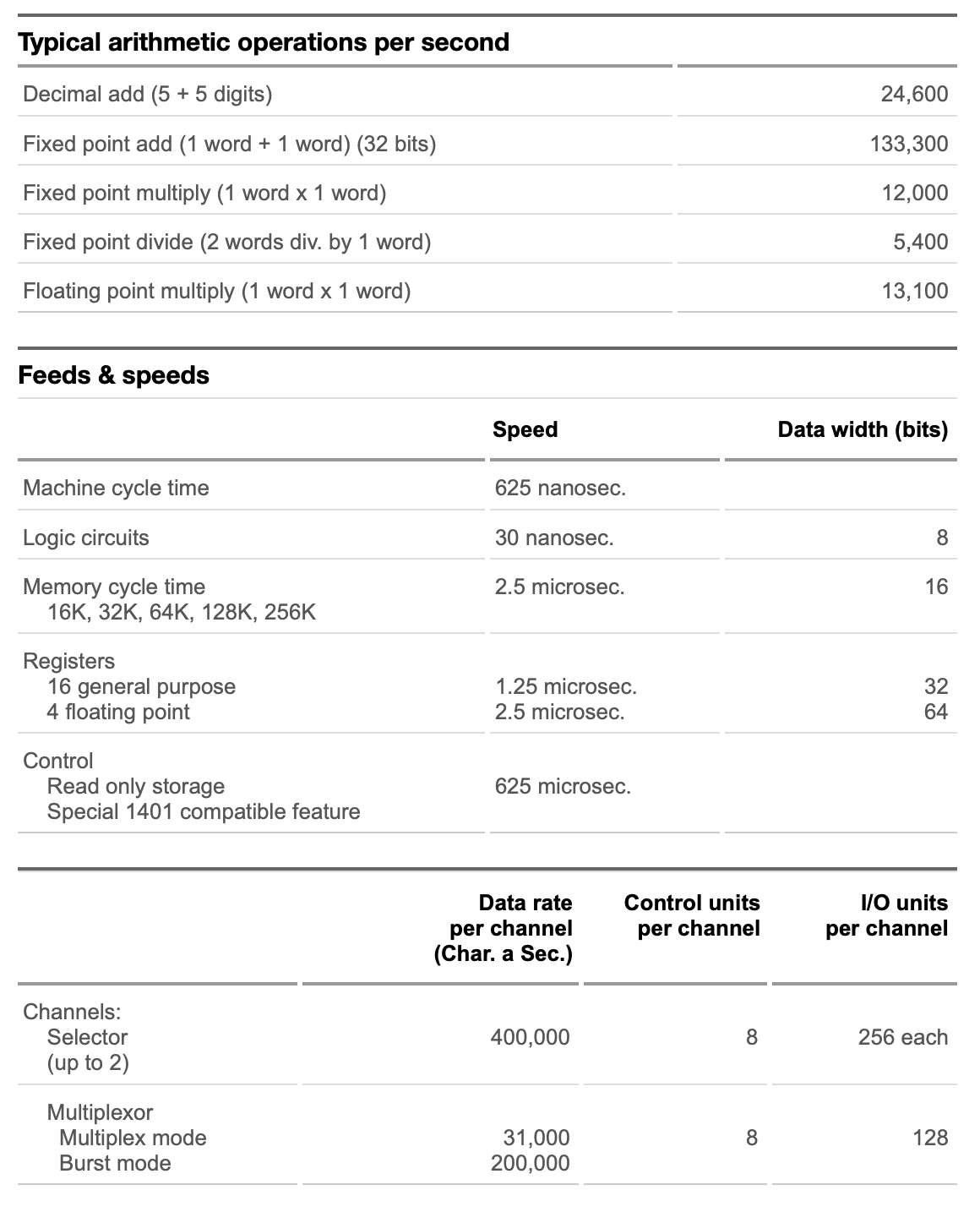IBMSystem360
UNM System/360 Model 40
Richard Williams used the University of New Mexico IBM System/360 Model 40 to develop and run Art1. A typical model 40 would be equipped with the 2040 Central Processing Unit, 128 KB byte storage, storage protection feature, universal instruction set, one multiplexor channel, two selector channels, and an interval timer. We know that the installed system had a card reader-punch to load the Art1 programs, perhaps the 1442, and a 1403 line printer for the program output?
In fact, the 1968 Argonne National Laboratory publication, "Argonne Code Center: Directory of Cooperating Installations" (Attach:ANL1968.pdf) provides the following information:
UNIVERSITY OF NEW MEXICO UNM
COMPUTER FACILITIES:
(1) MAIN PROCESSOR:
IBM 360/4OH
(2) ASSOCIATED EQUIPMENT:
MEMORY UNITS:
CORE:
262K bytes
DRUM AND DISK STORAGE:
5 IBM 2311 Disk Storage Drives PERIPHERAL UNITS:
MAGNETIC TAPE UNITS:
4 IBM 2403 - 800 bpi 9-track 60KB
1 IBM 2402 - 200, 556, 800 bpi 7-track
UNIT RECORD EQUIPMENT:
1 IBM 2540 Card Read Punch (reads 1000 cpm and punches 300 cpm)
1 IBM 1403 Printer 1100 lpm
1 IBM 2702 Transmission Control
6 IBM 1050 Printer-Keyboard
2 IBM 2848 Display Control
16 IBM 2260 Display Station
(3) OTHER INDEPENDENT OR SPECIAL-PURPOSE COMPUTER
FACILITIES AVAILABLE AT THIS INSTALLATION:
(4) SOFTWARE:
OS/360 Release 14
RAX
System/360 performance
IBM announced the System/360 in April 1964 and began delivering them in 1965. The machines were withdrawn from the market on October 7, 1977. Despite the success of the IBM S/360, it was a period of significant upheaval. James Cortada, author of IBM: The Rise and and Fall and Reinvention of a Global Icon, reflects on Frank T. Cary's leadership of IBM during this period: "...at a time when the cost of computing was dropping so quickly that the technology was evolving into a commodity, creating a major problem waiting to blow up in Armonk's conference rooms." [1]
Below is the typical performance of a System/360 Model 40 (Source: IBM Archives)

Computing costs
How much would the machine have cost? IBM leased equipment, a practice that established a predictable and long-term source of income and a bedrock of the company's finances until it reached a crisis in the mid-to-late 1980's. The System 360/40 typically rented for $9,000 to $17,000 per month. [2,3] That's about $50,000 to $100,000 in today's dollars. Of course, these are only the costs of renting the machine from IBM. The installation would also have trained staff running it and the utility costs, including power and cooling, and consumables -- punch cards were an especially lucrative product for IBM over the years. Solomon estimates that the cost per million ten-by-ten matrix multiplications for the Model 40 was about $3,000 in 1971 (it took roughly 100ms per multiplication). From this, we can infer that each minute of processing cost about two dollars a minute in 1971 dollars ($14 in 2022).
Operating system and software
The Argonne Directory of Cooperating Installations lists OS/360 and RAX as two available software packages. RAX refers to IBM's timesharing system, Remote Access Computing. One of Hammersley's punch card stacks in the Archives of American Art begins with the card:
ID RAX 518101595,AR702 'HAMMERSLEY, FREDERICK '
The Catalog of Programs for IBM System/360 August 1967 link provides details about RAX, including its features and equipment requirements. According to the catalog, RAX was ordered through the branch office by file (program) number 360A-CX-17X.
The Art1 source code listing shows that Williams complied Art1 using the RAX (Remote Access) feature, presumably from a remote terminal (such as the IBM 1050 typewriter terminal) in the Electrical Engineering department. RAX supported FORTRAN, BASIC, and other languages, and would be available for a part of the day. Other times were reserved for batch processing.
References
- James W. Cortada, IBM: The The Rise and Fall and Reinvention of a Global Icon. Cambridge, Massachusetts: MIT Press, 2019, p. 304.
- Martin B. Solomon, "Some Computer Economics in Education," Educational Technology 11, 47-49 (1971). link; Martin B. Solomon, "Some Computer Economics in Education." In The Computer and Education. Englewood Cliffs, NJ: Educational Technology Publications, 1973, p. 88.
- Ken Shirriff, www.righto.com/2019/04/iconic-consoles-of-ibm-system360.html, accessed 1/1/2022. link
Notes
Capabilities of a typical model 40?What operating systems or environments?
- Documents (e.g. Bitsavers)?
- Emulators (e.g. Hercules)?
